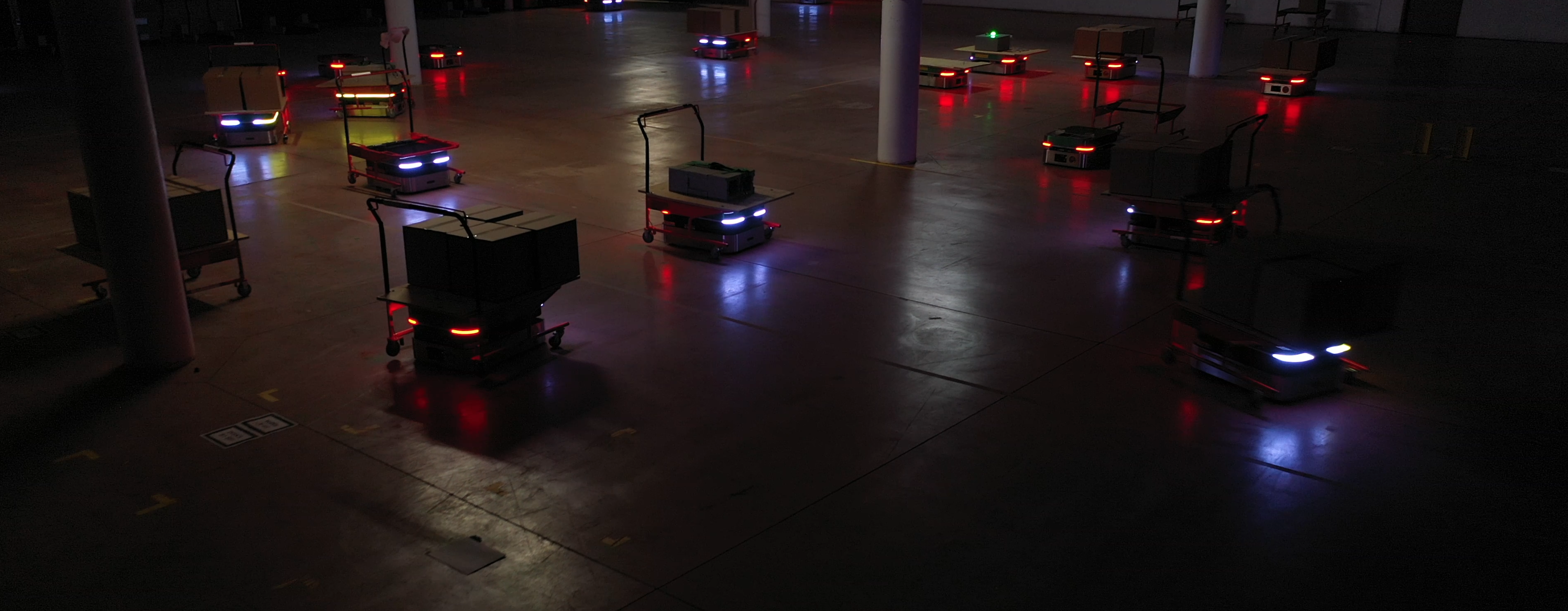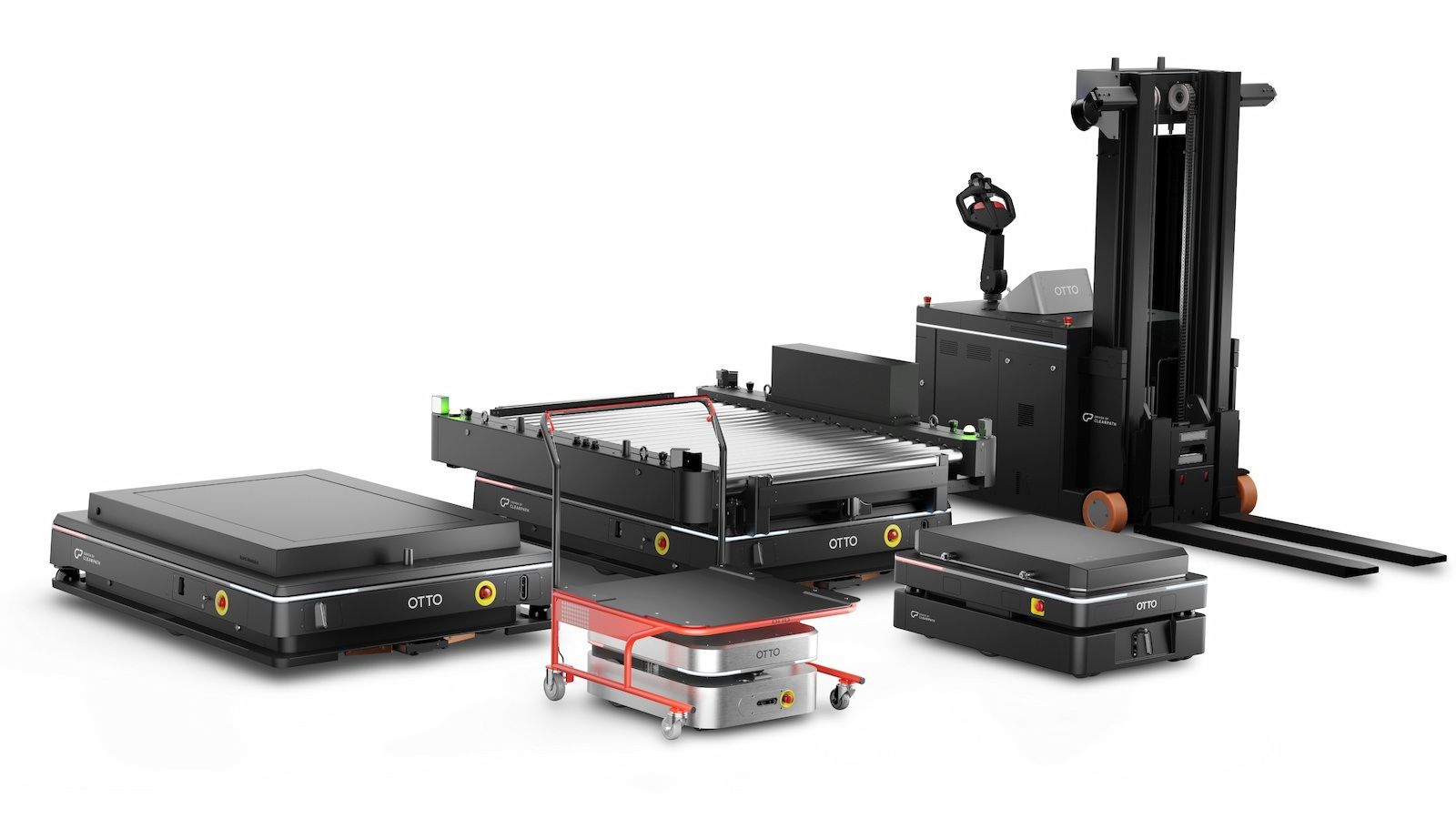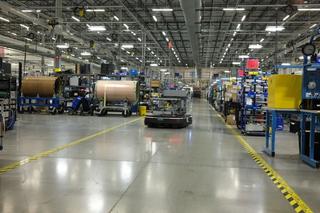Blog
8 key features for large scale autonomous mobile robot deployments

Worldwide, manufacturers are struggling to find workers to fill their open roles. In fact, while 4.6 million new manufacturing jobs are projected to be created by 2028, 2.4 million of them could go unfilled because of a skilled labor shortage. Thus, manufacturers are reallocating the labor that is available to more value-added, fulfilling tasks that require uniquely human skills like critical thinking.
Dull, repetitive tasks like manual material handling are instead being increasingly automated to solve this challenge. Safety is also a compelling reason for manufacturers to automate material handling as there is a 90% chance of a serious accident occurring during the 8-year average lifespan of a forklift.
The automation solution is being increasingly adopted across the industry, with a 74% investment increase in supply chain technology and innovation and a 53% increase in mobile robot shipments from 2022. Innovative industry leaders are recognizing that investing in autonomous material movement with autonomous mobile robots (AMRs) is helping to save money, improve efficiency, keep people safe and ensure business continuity.
When these 8 key features are considered in the early stages of a large-scale AMR deployment, manufacturers see significant improvement in optimizing the efficiency of workflows at scale.
1. Industrial strength robots
The AMRs you select need to be robust and made from durable materials that can withstand demanding industrial environments. Some robots are built from plastic that can be warped when driving near your furnace or shattered when going over cracks in your facility’s floor. Instead, look for the robots with an all-metal body construct, rugged steel chassis and industrial grade components.
In small deployments, one hardware problem once per year isn’t going to affect your productivity. However, if one hundred robots all have one hardware problem once per year, it becomes a much bigger problem. Industrial strength robots with a high Mean Time Between Intervention (MTBI) and ease of repair are particularly important for large scale deployments to ensure higher uptime and improved productivity.
2. Driving intelligence
Earlier AMRs had safety LiDARs that worked like headlights on a car, shining straight ahead and unable to see around the twists and turns of the road. However, like a robot, the car’s driver would slow down to a near stop when going around those turns to ensure safety.
The AMR you select should have Adaptive Fieldset technology, which works like adaptive headlights on a performance car. The fieldsets shift and extend out in the direction the robot is turning so the robot gets improved visibility in the direction of travel and doesn’t trigger needless stops. The improved visibility enables faster turns without sacrificing safety.
In a large fleet of AMRs, this is particularly important because when one slows down, so does the next one and the next one, resulting in a traffic jam. Adaptive Fieldsets improve productivity through the highest possible speed while maintaining maximum safety.

Image 2: Example of adaptive headlights on a car, similar to how they would work on an AMR.
3. Fleet management at scale
When you determine that you need more than one AMR to meet your throughput requirements, you’ll need to consider how the robots will interact with each other. Many fleet managers in the industry claim to operate 100 AMRs in the same facility, but not without productivity losses. Robot supervision must be highly sophisticated in order to keep the robots working and prevent situations where they are congested in traffic jams, running out of battery, blocked from reaching endpoints or starving for work.
To achieve productivity at scale, the fleet manager you select should be able to:
- Manage different payload capacities, flatbed and forked, with a singular software.
- Enable different job rules in the same map.
- Trigger jobs on different conditions, including robots independently discovering available payloads. This keeps material flowing without the need for human management of inventory or jobs.
- Integrate with your facility’s material transfer mechanisms or other machinery through connection logic instead of requiring manufacturers to program one robot at a time.
- Troubleshoot at scale with the best possible problem resolution time. Only OTTO Motors has built-in snapshot playback for real-time on-site debugging.
- Enable isolated data charts and graphs that show where slowness and failure is concentrated—time of day, day of week, robot, task or place. Armed with this information, you’ll know exactly how to target optimization efforts.
4. Facility integration
Your AMRs should be able to integrate with your existing ERP, WMS or MES systems. Look for vendors that carefully manage API integrations so you can improve efficiency and productivity while ensuring that data is secure and protected.
Additionally, AMR providers will have a variety of attachments for their robots, from conveyors to lifts to carts. These attachments should be able to integrate with your existing conveyors, pick-and-place palletizers, stretch wrappers and more. Attachments improve productivity for large scale deployments by opening up more workflow possibilities, but these benefits are only realized when the attachments can integrate seamlessly with your facility.

Image 3: OTTO Motors fleet of robots with their lift, conveyor and cart attachments.
5. Triage and diagnostic tools
No matter which AMR provider you select, there’s always going to be something that goes wrong. This is more often the case with larger deployments where multiple robots have to interact across your facility. However, when the AMR has a robust, intuitive diagnostic tool, a system error can turn into a simple investigation, resolution and prevention process.
For example, in the video below, the user wants to identify why their AMR could not complete the task assigned to it. Using the tools on their fleet manager, the user creates a snapshot of up to a fifteen minute interval where the issue occurred. Then, they play back that snapshot and uncover exactly what the AMR was seeing at this time. In this case, you can see that someone has placed a box in front of the AMR’s drop-off point. Now, this system error can be prevented in the future through training and an improved process. That’s the difference an intuitive triage and diagnostic tool can make.
6. Service and support
In order to diagnose an AMR issue, manufacturers also need service and support tools. While some AMR vendors offer limited support after the robots have been deployed, others have training programs to ensure your team becomes experts on the system they are operating.
What you choose will depend on your specific needs and how large your deployment is. For example, you may not want anyone on your team worrying about uptime, and you’d rather have the AMR vendor deal with problems as they occur. Contrarily, you may want a vendor that offers 24/7 on-call support to address mission critical needs right away, particularly when you’re operating with more than one robot.
There’s also a difference between a system that is already running and setting up a system from scratch. You can ask your AMR vendor if they do system deployment, if they have fully-trained partners who can deploy, or if you are expected to deploy the system yourself. Depending on the path that you take, the type and quality of training and support you require will change.
7. Data and analytics
Access to an abundance of data and information can help optimize material handling workflows, especially when multiple robots are interacting in a large scale deployment. AMR vendors offer various levels of data and analytics. Some even provide in-depth analytics that display production data so you can keep a tab on the health of your system, from visualizing KPIs at a glance to spotting bottlenecks to drilling down on specific vehicles or actionable tasks. This can help you optimize your fleet’s performance through system analysis and risk identification. Watch a quick preview of OTTO Fleet Analytics below:
8. Simulation
AMR vendors should offer the option to simulate your facility to help you visualize what your automated workflows will look like. This is extremely important for large scale deployments as the simulation will help you understand exactly how many robots you need to achieve your throughput objectives and meet ROI.
Using their simulation tool, an AMR vendor will be able to recreate your entire facility digitally, measuring and evaluating key interactions. For example, you’ll be able to see how having an aisle that is 6 inches wider can increase AMR average speed, or how a one-way street can reduce traffic congestion. These productivity-improving suggestions can be tested and proven in the simulation first, before you move equipment.
As you examine material handling automation options for your workflows, consider the key features described above when selecting a vendor. AMRs can help combat the global labor shortage, increase productivity and improve employee safety, but these benefits are best realized when the right AMR is selected, particularly for large scale deployments.







